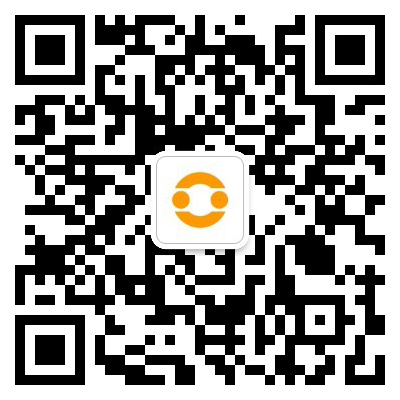The early signs of diabetes should not be ignored. By identifying these signs and taking timely action, the condition can be effectively controlled. At the same time, a reasonable diet and lifestyle changes are of great significance for lowering blood sugar and reversing diabetes.
I. Seven early signs of diabetes
- Polyuria
After blood sugar rises, the body tries to excrete excess sugar through urine. When blood sugar exceeds the renal glucose threshold, the glucose filtered through the glomerulus cannot be completely reabsorbed by the renal tubules, which will form an osmotic diuresis. Patients will find that the amount of urine has increased significantly, especially the number of urinations at night. This not only affects the quality of sleep, but in the long run it may also cause dehydration and aggravate the condition.
- Polydipsia
Because polyuria causes water loss in the body, intracellular dehydration, stimulates the osmotic pressure receptors in the hypothalamus, and causes a feeling of thirst. Patients will drink water frequently, and the amount of water they drink is much higher than usual. If you find yourself suddenly becoming abnormally thirsty and always wanting to drink water, you need to be alert to the possibility of diabetes.
- Polyphagia
Although the amount of food intake has increased, the weight has not increased but decreased. This is because of insufficient insulin or insulin resistance. The body cells cannot fully utilize glucose to produce energy. The body is in a state of energy deficiency. The brain will send hunger signals, prompting the patient to keep eating. However, because the body cannot effectively utilize the energy in these foods, the weight will gradually decrease.
- Weight loss
As mentioned above, the body cannot use glucose normally, and it will begin to break down fat and protein to provide energy. This metabolic change causes a significant decrease in weight in the short term, even if the amount of food consumed has not decreased or even increased. If you continue to lose weight without deliberately losing weight, you should consider the factor of diabetes.
- Fatigue
Cells cannot get enough glucose to supply energy, and the body will feel tired and weak. Patients may feel that doing daily activities is more strenuous than before, easily fatigued, and physical strength and endurance decreased. This feeling of fatigue may gradually worsen and affect life and work.
- Blurred vision
High blood sugar can change the osmotic pressure of the aqueous humor and lens, causing changes in the refractive power of the lens, leading to blurred vision. This change in vision may be temporary or develop gradually. If vision problems are accompanied by other early signs of diabetes, it is even more important to pay attention.
- Skin itching
High blood sugar can stimulate nerve endings, and the sugar content in the skin increases, which can easily breed bacteria and fungi, causing skin itching. Patients may experience systemic or local skin itching, especially vulva itching, which is more common, and conventional anti-itching methods are not effective.

List of foods that lower blood sugar
Vegetables
Celery: Rich in dietary fiber, it can delay the absorption of carbohydrates and reduce blood sugar fluctuations. At the same time, apigenin and other ingredients in celery have a certain effect on regulating blood sugar. Cold celery and celery fried with dried tofu are good ways to eat them.
Spinach: Rich in vitamins, minerals and dietary fiber. A flavonoid substance in spinach can promote insulin secretion and help lower blood sugar. Spinach can be made into spinach soup, stir-fried spinach, etc.
Broccoli: It is a nutritious cruciferous vegetable that contains antioxidants such as sulforaphane. It has a high dietary fiber content, which can enhance satiety and stabilize blood sugar. Broccoli can be boiled and served cold or stir-fried with other vegetables.
- Fruits
Grapefruit: Grapefruit pulp contains naringin, which can enhance the effect of insulin and lower blood sugar. At the same time, grapefruit has a low glycemic index, with a sugar content of about 9 grams per 100 grams of grapefruit. Diabetic patients can eat it in moderation.
Apple: Pectin in apples is a water-soluble dietary fiber that can form a viscous liquid in the intestines, delaying the absorption of glucose by the intestines, thereby stabilizing blood sugar. However, be careful to control the amount of consumption and choose varieties that are not too sweet.
Strawberry: Low glycemic index, rich in vitamin C and dietary fiber. Antioxidants such as anthocyanins in strawberries are beneficial to blood sugar regulation. Eating a few strawberries every day can not only satisfy your appetite, but also help control blood sugar.
- Cereals and beans
Oats: Rich in beta-glucan, this dietary fiber can slow down the digestion and absorption of carbohydrates and reduce postprandial blood sugar peaks. Oats can be cooked into porridge or mixed with milk for consumption.
Black beans: Rich in dietary fiber, protein and a variety of antioxidants. Certain ingredients in black beans help improve insulin sensitivity. You can cook black bean soup or make mixed bean rice with other beans.
- Other foods
Bitter melon: The bitter melon in bitter melon is known as “plant insulin” and can stimulate the release of insulin and lower blood sugar. You can eat bitter melon in cold salad or stir-fry bitter melon with eggs, but bitter melon is cold in nature, so people with weak spleen and stomach should not eat too much.
Onion: Contains sulfide, flavonoids and other ingredients, which can lower blood sugar and blood lipids. Eating onions raw is more effective in lowering blood sugar, but be careful of its pungent smell. You can cut the onion into small pieces and add it to the salad.

III. Methods for reversing diabetes
Diabetes reversal refers to a series of intervention measures to restore the patient’s blood sugar level to normal, improve pancreatic islet function, and thus reduce or stop drug treatment. Patients with early diabetes (especially type 2 diabetes) may be able to achieve reversal under certain conditions.
Methods for reversing diabetes
(1) Lifestyle intervention: including a reasonable diet, regular exercise, smoking cessation and alcohol restriction, and maintaining a good work and rest schedule.
(2) Drug treatment: Under the guidance of a doctor, use hypoglycemic drugs reasonably and use insulin when necessary.
(3) Islet cell transplantation: For some patients, islet cell transplantation may be an effective reversal method.
Precautions for reversing diabetes
(1) Early diagnosis: Early detection of diabetes is the key to reversal.
(2) Individualized treatment: Develop a treatment plan based on the patient’s specific situation.
(3) Long-term monitoring: Even if reversal is achieved, patients still need to regularly monitor blood sugar and other indicators.
(4) Psychological support: Maintaining a positive attitude is helpful for reversing diabetes.
Diabetic patients should develop a suitable treatment plan under the guidance of a doctor and in combination with their own situation in order to achieve reversal of diabetes.








